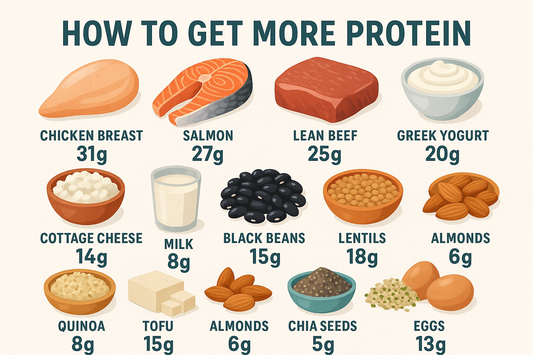Want the benefits of a personal trainer without the price tag? You're not alone. While professional guidance is invaluable, you can absolutely create an effective strength training program on your own—whether you're building a foundation before hiring a trainer or taking your fitness journey into your own hands.
After spending 15+ years coaching clients from complete beginners to advanced lifters, I've identified the essential components that create transformative strength training routines. Here's how to create yours from scratch.

The 9 Essential Muscle Groups for a Balanced Physique
A well-designed strength program trains your entire body in balanced proportion. Here are the key muscle groups to include in your routine, along with my recommended exercises for each:
1. Chest
The chest muscles (pectorals) contribute to that coveted upper-body strength and aesthetic.
- Beginner-friendly: Push-ups, incline push-ups against a bench
- Intermediate: Dumbbell chest press, dumbbell flyes
- Advanced: Barbell bench press, cable crossovers
2. Shoulders
Strong, defined shoulders create that impressive V-taper and support virtually every upper body movement.
- Beginner-friendly: Lateral raises with light dumbbells, front raises
- Intermediate: Overhead press, upright rows
- Advanced: Arnold press, face pulls for rear deltoid development
3. Back
Perhaps the most overlooked muscle group for beginners, a strong back prevents injuries and creates that powerful, wide appearance.
- Beginner-friendly: Resistance band rows, Superman holds
- Intermediate: Dumbbell rows, lat pulldowns
- Advanced: Pull-ups, barbell rows, deadlifts
4. Biceps
While smaller than other muscle groups, well-defined biceps are a hallmark of a balanced physique.
- Beginner-friendly: Resistance band curls, alternating dumbbell curls
- Intermediate: Hammer curls, concentration curls
- Advanced: Barbell curls, cable curls with varying grip positions
5. Triceps
Comprising roughly 2/3 of your arm size, triceps often deliver more impressive results than biceps training.
- Beginner-friendly: Tricep dips on a bench, standing kickbacks
- Intermediate: Overhead tricep extensions, skull crushers
- Advanced: Close-grip bench press, weighted parallel bar dips
6. Core
A strong core does far more than create visible abs—it stabilizes your entire body during complex movements.
- Beginner-friendly: Planks, bird dogs, dead bugs
- Intermediate: Russian twists, hanging knee raises
- Advanced: Cable rotations, weighted decline sit-ups, ab wheel rollouts
7. Quadriceps
Powerful quads provide explosive strength for everyday movements and athletic performance.
- Beginner-friendly: Bodyweight squats, step-ups
- Intermediate: Goblet squats, Bulgarian split squats
- Advanced: Barbell back squats, front squats, leg press
8. Hamstrings
Often undertrained compared to quads, strong hamstrings prevent knee injuries and complete your leg development.
- Beginner-friendly: Glute bridges, good mornings with no weight
- Intermediate: Romanian deadlifts, stability ball hamstring curls
- Advanced: Nordic hamstring curls, seated/lying hamstring curls
9. Calves
Resilient calves require specific training strategies to grow effectively.
- Beginner-friendly: Standing calf raises, seated calf raises
- Intermediate: Single-leg calf raises, jump rope intervals
- Advanced: Weighted calf raises, explosive box jumps
Structuring Your Training Week: What Works Best
After coaching hundreds of clients, I've found these weekly training structures work best:
For Beginners (0-6 months experience):
Full-body workouts 3x per week with at least one rest day between sessions.
- Monday: Full Body
- Wednesday: Full Body
- Friday: Full Body
This approach provides sufficient stimulus while maximizing recovery time—crucial for beginners whose bodies aren't yet adapted to resistance training.
For Intermediate Trainees (6 months - 2 years):
Upper/Lower Split 4x per week
- Monday: Upper Body
- Tuesday: Lower Body
- Thursday: Upper Body
- Friday: Lower Body
This allows slightly more volume per muscle group while still providing 72+ hours of recovery per region.
For Advanced Lifters (2+ years consistent training):
Push/Pull/Legs Split 5-6x per week
- Monday: Push (Chest, Shoulders, Triceps)
- Tuesday: Pull (Back, Biceps)
- Wednesday: Legs (Quads, Hamstrings, Calves)
- Thursday: Push
- Friday: Pull
- Saturday: Legs
This higher-frequency approach works well for experienced lifters whose recovery capacity has improved significantly.

The Science of Recovery: Why Rest Days Matter
Despite what social media might suggest, muscles don't grow during workouts—they grow during recovery. Each time you train a muscle group, you create microscopic damage to muscle fibers. Your body repairs this damage during rest periods, rebuilding stronger than before.
Without adequate recovery (typically 48-72 hours per muscle group), you'll experience:
- Diminished performance
- Increased injury risk
- Hormonal imbalances
- Stalled progress
- Potential muscle loss
This is why properly structured training programs build in sufficient rest periods. Even advanced bodybuilders rarely train the same muscle group two days consecutively.
Nutrition: The Missing Link in Most Training Programs
The perfect workout routine falls flat without proper nutritional support. For strength training specifically:
Protein requirements: Aim for 1.6-2.2g per kg of bodyweight daily, spaced throughout the day in 20-40g portions. This provides the amino acids necessary for muscle repair and growth.
Post-workout nutrition: While the "anabolic window" isn't as narrow as once thought, consuming 20-40g of protein within 2 hours of training optimizes recovery. Complex carbohydrates help replenish muscle glycogen.
Hydration: Even mild dehydration (2% body weight) can reduce strength by 10-20%. Aim for clear or light yellow urine throughout the day.

Sample Beginner Routine: Full-Body, 3x Weekly
Here's a simple yet effective routine I've used with countless beginners:
Workout A (Monday):
- Goblet Squats: 3 sets × 10-12 reps
- Push-ups (or incline push-ups): 3 sets × 8-12 reps
- Dumbbell Rows: 3 sets × 10-12 reps per side
- Standing Calf Raises: 2 sets × 15-20 reps
- Plank: 3 sets, hold for 20-45 seconds
Workout B (Wednesday):
- Romanian Deadlift: 3 sets × 10-12 reps
- Dumbbell Shoulder Press: 3 sets × 8-12 reps
- Lat Pulldowns (or band pull-downs): 3 sets × 10-12 reps
- Bicep Curls: 2 sets × 12-15 reps
- Russian Twists: 3 sets × 10-15 reps per side
Workout C (Friday):
- Walking Lunges: 3 sets × 10-12 steps per leg
- Dumbbell Bench Press: 3 sets × 8-12 reps
- Seated Row: 3 sets × 10-12 reps
- Tricep Dips: 2 sets × 10-15 reps
- Glute Bridges: 3 sets × 15-20 reps
Instructions:
- Start with a 5-minute warm-up (light cardio + dynamic stretching)
- Rest 60-90 seconds between sets
- Focus on proper form rather than heavy weights
- Increase weight when you can complete all reps with good form
- End with 5 minutes of static stretching

When to Consider Hiring a Professional
While self-directed training can be highly effective, certain situations warrant professional guidance:
- You're completely new to exercise and feel overwhelmed
- You have pre-existing injuries or medical conditions
- You've hit a frustrating plateau despite consistent effort
- You're training for a specific event or competition
- You struggle with exercise motivation or accountability
Consider starting with even a single session to learn proper form for fundamental movements, then applying those principles to your self-directed program.
The Bottom Line
Building your own strength training routine isn't just about saving money—it's about developing body awareness and understanding what works for your unique physiology. By focusing on these nine essential muscle groups and following evidence-based training principles, you can make remarkable progress without expensive personal training.
Remember that consistency trumps perfection. A "good enough" routine that you follow consistently will produce far better results than the "perfect" routine you abandon after three weeks. Start where you are, use what you have, and build the strong, capable body you deserve.
What's your biggest challenge when it comes to strength training? Drop a comment below, and I'll help troubleshoot your specific situation!













